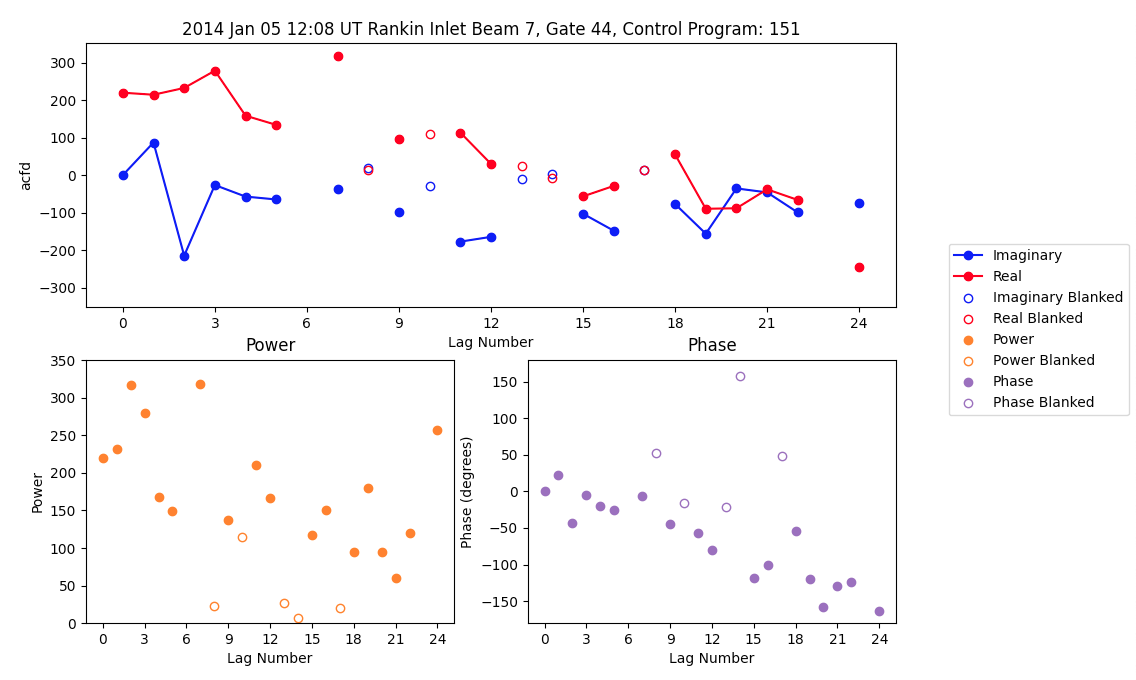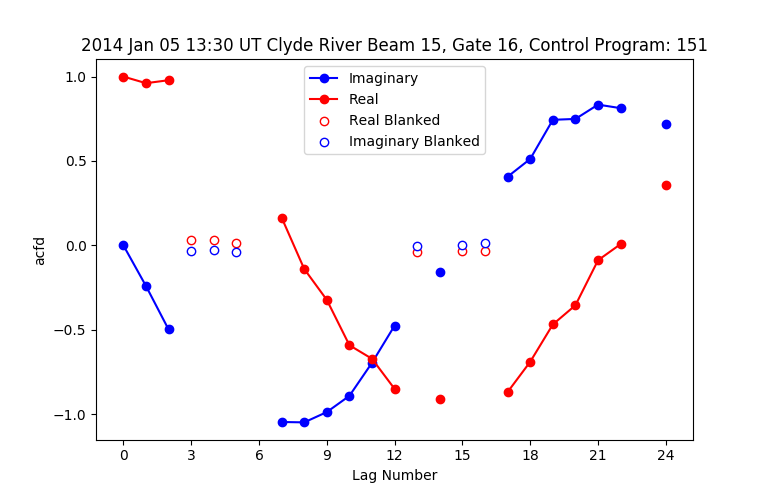Auto-Correlation Function Plots
plot_acfs plots the imaginary and real parts of the Auto-Correlation Function (ACF), along with the power and phase of the ACF in the selected RAWACF file.
Basic code to plot ACFs from a RAWACF file would look like:
import pydarn
import matplotlib.pyplot as plt
from datetime import datetime
reader = pydarn.SuperDARNRead("data/20140105.1208.03.rkn.rawacf")
rawacf_data = reader.read_rawacf()
plt.figure(figsize=(12, 7))
pydarn.ACF.plot_acfs(rawacf_data, beam_num=7, gate_num=44,
start_time=datetime(2014, 1, 5, 12, 8))
plt.show()

You also have access to numerous plotting options:
| Parameter | Action |
|---|---|
| beam_num=(int) | beam number to plot |
| gate_num=(int) | gate number to plot |
| parameter=(string) | parameter to pick between acfd or xcfd plotting |
| scan_num=(int) | the scan number to plot |
| start_time=None | plot the closest beam scan to the given start time (overrides the scan number if set) |
| normalized=(bool) | normalizes the parameter data with the associated power 0 value |
| real_color=(str) | Real part of the parameter line color |
| imaginary_color=(str) | Imaginary part of the parameter line color |
| plot_blank=(bool) | Determine if blanked lags should be plotted |
| blank_marker=(str) | Choice of marker to indicate blanked lags are a dot (general python markers accepted) |
| legend=(bool) | plot a legend |
| pwr_and_phs=(bool) | Plots subplots of power and phase of the ACF |
| kwargs** | arguments passed in matplotlib line_plot for real and imaginary plots |
If blank lags are present in the data, it will look similar to the following:
import pydarn
import matplotlib.pyplot as plt
from datetime import datetime
rawacf_file = '20140105.1200.03.cly.rawacf'
rawacf_data = pydarn.SuperDARNRead(rawacf_file).read_rawacf()
pydarn.ACF.plot_acfs(rawacf_data, beam_num=15, gate_num=16, start_time=datetime(2014, 1, 5, 13, 30), pwr_and_phs=False)
plt.show()
